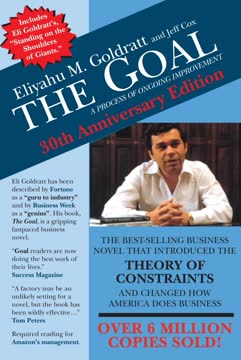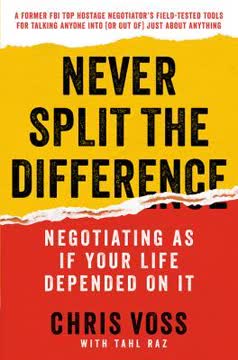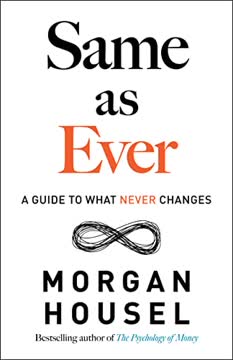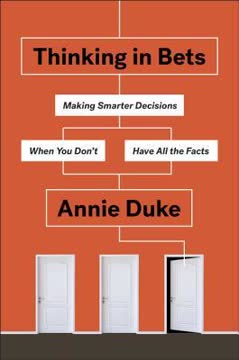Key Takeaways
1. Strategic pricing is about value creation, not just cost recovery
The purpose of strategic pricing is to price more profitably by capturing more value, not necessarily by making more sales.
Value-based pricing focuses on understanding and capturing the economic value created for customers, rather than just covering costs. This approach enables companies to set prices that reflect the true worth of their offerings. Unlike cost-plus pricing, which can lead to overpricing in weak markets and underpricing in strong ones, value-based pricing aligns prices with market conditions.
Key principles of strategic pricing:
- Proactive - Anticipate events and develop strategies in advance
- Value-based - Reflect differences in value across customers
- Profit-driven - Evaluate success by profitability, not just revenue
The strategic pricing pyramid provides a framework with five levels:
- Value creation
- Price structure
- Price and value communication
- Pricing policy
- Price level
2. Understand and quantify economic value to set optimal prices
Economic value accounts for the fact that the value one can capture for commodity attributes of an offer is limited to whatever competitors charge.
Economic value estimation involves determining the total economic value of an offering, which consists of:
- Reference value - Price of the customer's best alternative
- Differentiation value - Worth of what distinguishes the offering from alternatives
Approaches to estimating value:
- Monetary value - Quantify financial impact through in-depth customer interviews
- Psychological value - Use techniques like conjoint analysis to estimate subjective worth
Understanding economic value enables companies to:
- Set prices that reflect true worth to customers
- Identify opportunities to create and capture more value
- Make informed decisions about product development and positioning
3. Segment prices to capture different values across customers
The goal of that structure is to mitigate the tradeoff between winning high prices for low volume and high volume for low prices.
Price segmentation involves creating a structure of prices that aligns with differences in economic value and cost-to-serve across customer segments. This approach allows companies to capture more revenue from high-value segments while still serving price-sensitive segments profitably.
Key mechanisms for maintaining segmented pricing:
- Price-offer configuration - Tailor product/service bundles for different segments
- Price metrics - Use different units of pricing (e.g. per use, per outcome)
- Price fences - Create criteria customers must meet to qualify for lower prices
Effective segmentation enables companies to:
- Maximize profitability across diverse customer groups
- Serve a broader market without sacrificing margins
- Align prices more closely with perceived value
4. Craft value messages tailored to product type and buying stage
The role of value and price communications, therefore, is to protect your value proposition from competitive encroachment, improve willingness-to-pay, and increase the likelihood of purchase as customers move through their buying process.
Value communication should be adapted based on:
Product characteristics:
- Search vs. experience goods
- Monetary vs. psychological benefits
Customer's stage in buying process:
- Origination
- Information gathering
- Selection
- Fulfillment
Key principles for effective value communication:
- For search goods, explicitly link features to benefits
- For experience goods, focus on broader assurances of value
- Tailor messages to different participants in B2B buying processes
- Frame price relative to value at the fulfillment stage
Effective communication can significantly impact purchase intent and willingness-to-pay by helping customers recognize the full value of an offering.
5. Develop pricing policies to manage expectations and negotiations
Pricing policies are rules or habits, either explicit or cultural, that determine how a company varies its prices when faced with factors other than value and cost that threaten its ability to achieve its objectives.
Well-designed pricing policies help companies:
- Maintain price integrity and avoid rewarding aggressive negotiation
- Proactively address common pricing challenges
- Create expectations that drive better customer behavior
Key areas for policy development:
- Responding to price objections
- Managing price increases
- Dealing with economic downturns
- Promotional pricing
Effective policies should be:
- Transparent - Clearly communicated to customers
- Consistent - Applied uniformly across similar situations
- Proactive - Anticipate and address potential issues in advance
By establishing and enforcing clear policies, companies can reduce the need for ad hoc discounting and improve long-term profitability.
6. Set prices strategically based on objectives and market response
The goal of pricing should be to find the combination of margin and market share that maximizes profitability over the long term.
The price-setting process involves:
- Defining the price window (ceiling and floor)
- Establishing an initial price point based on:
- Alignment with overall business strategy
- Price-volume trade-offs
- Estimated customer response
- Communicating new prices to the market
Strategic considerations for price setting:
- Skim pricing - High prices for unique, high-value offerings
- Penetration pricing - Low prices to rapidly gain market share
- Neutral pricing - Balancing price with other marketing tools
Tools for estimating market response:
- Controlled price experiments
- Purchase intention surveys
- Structured inferences from historical data
- Incremental implementation and adjustment
The key is to balance internal financial constraints with external market conditions to maximize long-term profitability.
7. Adapt pricing approach throughout the product life cycle
Pricing decisions affect whether a company will sell less of the product at a higher price or more of the product at a lower price.
The product life cycle stages require different pricing approaches:
-
Introduction:
- Focus on educating buyers about value
- Use price to signal product worth
- Consider promotional pricing to drive adoption
-
Growth:
- Adjust prices as competition emerges
- Balance margin and volume to maximize growth
- Consider sequential skimming or penetration strategies
-
Maturity:
- Defend against increased price competition
- Explore opportunities for price segmentation
- Optimize pricing of complementary products/services
-
Decline:
- Choose between retrenchment, harvesting, or consolidation
- Adjust pricing to support chosen strategy
Adapting pricing strategies throughout the life cycle helps maximize profitability at each stage and extend the product's profitable lifespan.
8. Implement pricing strategy through organizational alignment
Implementing pricing strategy decisions requires properly addressing organizational issues related to how decisions are made and enforced as well as motivational issues that encourage managers to engage in more profitable behaviors.
Key elements for effective implementation:
-
Organizational structure:
- Define roles and responsibilities for pricing
- Determine level of centralization vs. decentralization
- Establish clear decision rights
-
Pricing processes:
- Map and optimize key pricing activities
- Identify and address profit leaks
-
Information and tools:
- Provide managers with relevant data and analytics
- Implement price management systems where appropriate
-
Performance measures and incentives:
- Align metrics with pricing strategy objectives
- Design compensation to reward profitable pricing decisions
-
Change management:
- Secure senior leadership support
- Use demonstration projects to build momentum
- Provide training and ongoing support
Successful implementation requires a holistic approach addressing structure, processes, tools, and motivation to drive consistent execution of pricing strategy.
9. Use relevant costs, not accounting costs, for pricing decisions
Costs should never determine price, but costs do play a critical role in formulating a pricing strategy.
Relevant costs for pricing decisions are those that are:
- Incremental - Change as a result of the pricing decision
- Avoidable - Can be eliminated if the sale is not made
Key principles for identifying relevant costs:
- Focus on future costs, not historical or sunk costs
- Consider opportunity costs of resources used
- Analyze cost changes at the margin, not average costs
Common pitfalls to avoid:
- Using fully allocated costs that include fixed overheads
- Relying on depreciation schedules that don't reflect true economic costs
- Ignoring capacity utilization effects on incremental costs
Understanding relevant costs enables more accurate profitability analysis and better pricing decisions, especially in competitive markets or for short-term opportunities.
10. Analyze price changes using break-even and financial tools
To calculate the break-even sales changes for a reactive price change, we need to address the following key questions: (1) What is the minimum potential sales loss that justifies meeting a lower competitive price? (2) What is the minimum potential sales gain that justifies not following a competitive price increase?
Key financial analysis tools for pricing decisions:
-
Break-even analysis:
- Calculate minimum sales change needed to justify a price change
- Consider both price effects and volume effects
-
Contribution margin analysis:
- Focus on incremental profit per unit sold
- Use to evaluate price-volume trade-offs
-
Incremental profit analysis:
- Compare change in total contribution to change in fixed costs
- Useful for evaluating pricing strategies with capacity changes
-
Break-even sales curves:
- Visualize price-volume relationships
- Identify profitable pricing zones
These tools help managers quantify the potential impact of pricing decisions and make more informed choices in the face of uncertainty about market response.
11. Compete on price thoughtfully, considering long-term impacts
The key to surviving a negative-sum pricing game is to avoid confrontation unless you can structure it in a way that you can win and the likely benefit from winning exceeds the likely cost.
Guidelines for price competition:
-
Analyze the situation:
- Is there a cost-effective response?
- Can the competitor sustain the price difference?
- Are other markets threatened?
-
Choose an appropriate strategy:
- Ignore - For weak threats with low sales at risk
- Accommodate - Adjust strategy to minimize impact of strong threats
- Attack - When justified against weaker competitors
- Defend - Convince strong competitors to back off
-
Manage competitive information:
- Collect and evaluate competitor pricing data
- Selectively communicate intentions and capabilities
-
Consider long-term impacts:
- Avoid undermining industry profitability
- Focus on building sustainable competitive advantages
Thoughtful price competition requires balancing short-term gains against long-term strategic positioning and industry health. The goal is to achieve competitive objectives while minimizing destructive price wars.
Last updated:
FAQ
What's The Strategy and Tactics of Pricing about?
- Strategic Pricing Focus: The book emphasizes that pricing is not just about setting a price but involves understanding the value proposition and managing customer perceptions.
- Value Creation and Communication: It discusses how to create and communicate value effectively to influence customers' willingness to pay.
- Comprehensive Pricing Strategies: Covers various aspects of pricing, including pricing policy, price structure, and aligning pricing with business strategy for profitability.
Why should I read The Strategy and Tactics of Pricing?
- Enhance Profitability: The book helps develop a deeper understanding of setting prices that maximize profitability rather than just sales volume.
- Practical Frameworks: Offers practical frameworks and tools applicable in real-world scenarios, valuable for managers and marketers.
- Stay Competitive: Equips readers with knowledge to adapt to changing market conditions effectively, maintaining a competitive edge.
What are the key takeaways of The Strategy and Tactics of Pricing?
- Value-Based Pricing: Emphasizes understanding and quantifying the economic value of products to set appropriate prices.
- Strategic Pricing Pyramid: Introduces a framework outlining five key elements of strategic pricing: value creation, price structure, price communication, pricing policy, and price level.
- Implementation Challenges: Discusses challenges of implementing pricing strategies and provides guidance on embedding strategic pricing into company culture.
What is the Strategic Pricing Pyramid in The Strategy and Tactics of Pricing?
- Five Key Elements: Consists of value creation, price structure, price communication, pricing policy, and price level.
- Foundation of Pricing Strategy: Focuses on understanding how products create value for customers, essential for effective pricing.
- Holistic Approach: Illustrates that successful pricing strategies require integrating various aspects of pricing rather than treating them in isolation.
How does The Strategy and Tactics of Pricing define value creation in pricing?
- Understanding Customer Value: Defined as the process of understanding how products and services create value for customers.
- Differentiation Value: Distinguishes between economic value and differentiation value, emphasizing capturing differentiation value in pricing.
- Value-Based Segmentation: Advocates for value-based market segmentation to align offerings with specific value perceptions of different customer segments.
What are some pricing policies discussed in The Strategy and Tactics of Pricing?
- Managing Price Exceptions: Suggests developing clear pricing policies to manage requests for price exceptions, maintaining price integrity.
- Response to Price Objections: Emphasizes having policies for responding to price objections from different types of buyers.
- Consistency and Transparency: Stresses that pricing policies should be consistent and transparent to create predictable expectations for customers.
How does The Strategy and Tactics of Pricing suggest communicating value to customers?
- Tailored Messaging: Recommends adapting value messages based on product characteristics and the customer’s buying process.
- Highlighting Differentiation: Focuses on unique benefits that differentiate your product from competitors using testimonials, case studies, or data.
- Addressing Psychological Value: Emphasizes communicating psychological value, especially for experience goods, through storytelling and branding.
What are the best quotes from The Strategy and Tactics of Pricing and what do they mean?
- “Pricing is not just about calculating the ‘right’ price.”: Highlights the need for a strategic approach considering value, customer perceptions, and market dynamics.
- “The measure of success at strategic pricing is not how much it increases price but how much it increases profitability.”: Encourages focusing on value creation and customer satisfaction.
- “Effective pricing requires looking beneath the demand curve.”: Suggests understanding underlying factors driving customer demand and willingness to pay.
What is the definition of incremental costs in The Strategy and Tactics of Pricing?
- Incremental Costs Explained: Defined as costs that rise or fall as a result of a pricing decision, crucial for determining profitability.
- Relevance to Pricing Decisions: Helps businesses make informed pricing decisions aligning with financial goals.
- Example of Incremental Costs: Only costs associated with producing and selling additional units are considered incremental when lowering prices to increase sales.
How does The Strategy and Tactics of Pricing address competition in pricing?
- Competitive Analysis: Emphasizes analyzing competitors' pricing strategies and market positioning.
- Price Wars: Discusses risks associated with price wars and the importance of maintaining profitability.
- Strategic Responses: Provides guidelines for responding to competitive pricing actions, including when to accommodate or retaliate.
What role do ethical considerations play in pricing strategies in The Strategy and Tactics of Pricing?
- Ethical Constraints: Discusses various ethical levels influencing pricing decisions, emphasizing fairness and transparency.
- Legal Implications: Highlights the legal framework surrounding pricing, including antitrust laws and regulations.
- Balancing Profit and Ethics: Encourages balancing profitability with ethical considerations to ensure sustainable business practices.
How can I apply the concepts from The Strategy and Tactics of Pricing in my business?
- Implement Analytical Tools: Utilize tools like break-even analysis and price sensitivity measurement to inform pricing decisions.
- Focus on Customer Perception: Shift pricing strategy to reflect customer perceptions of value rather than just costs.
- Monitor Market Dynamics: Stay adaptable by regularly monitoring market conditions and competitor pricing strategies.
Review Summary
The Strategy and Tactics of Pricing receives generally positive reviews, with readers praising its comprehensive coverage of pricing strategies. Many find it useful for professionals and students alike, offering practical frameworks and theoretical insights. Some criticize its length and occasional difficulty in applying concepts to small businesses. Readers appreciate the book's value-based pricing approach and its relevance to marketing and business decisions. However, a few reviewers find it long-winded and challenging to get through, while others consider it the definitive work on pricing strategy.
Similar Books










Download PDF
Download EPUB
.epub digital book format is ideal for reading ebooks on phones, tablets, and e-readers.




